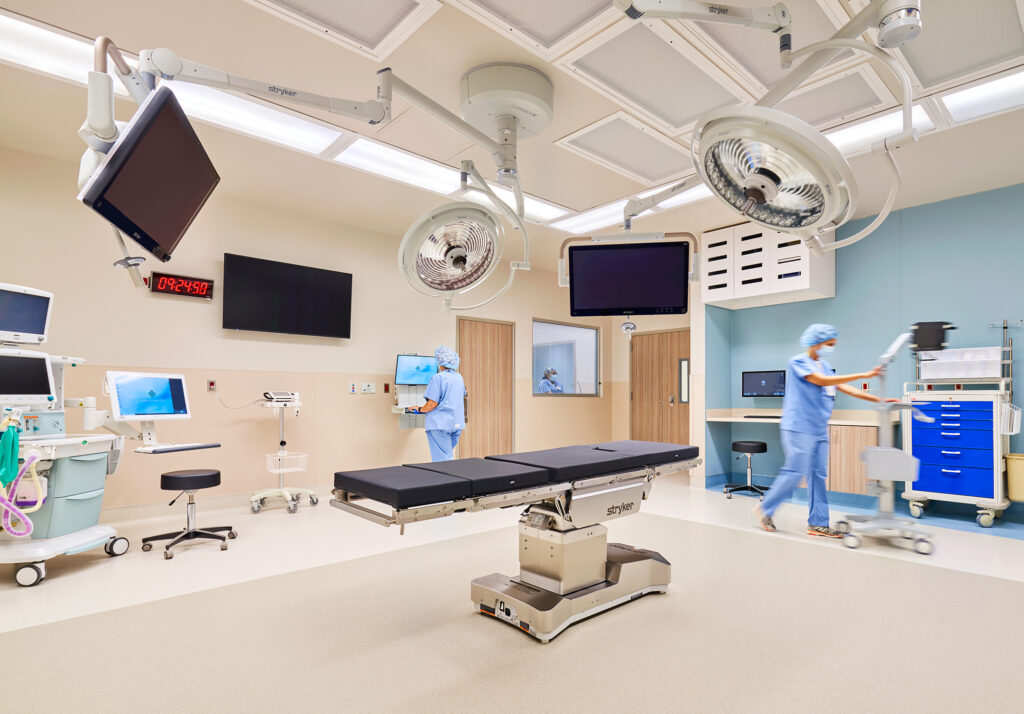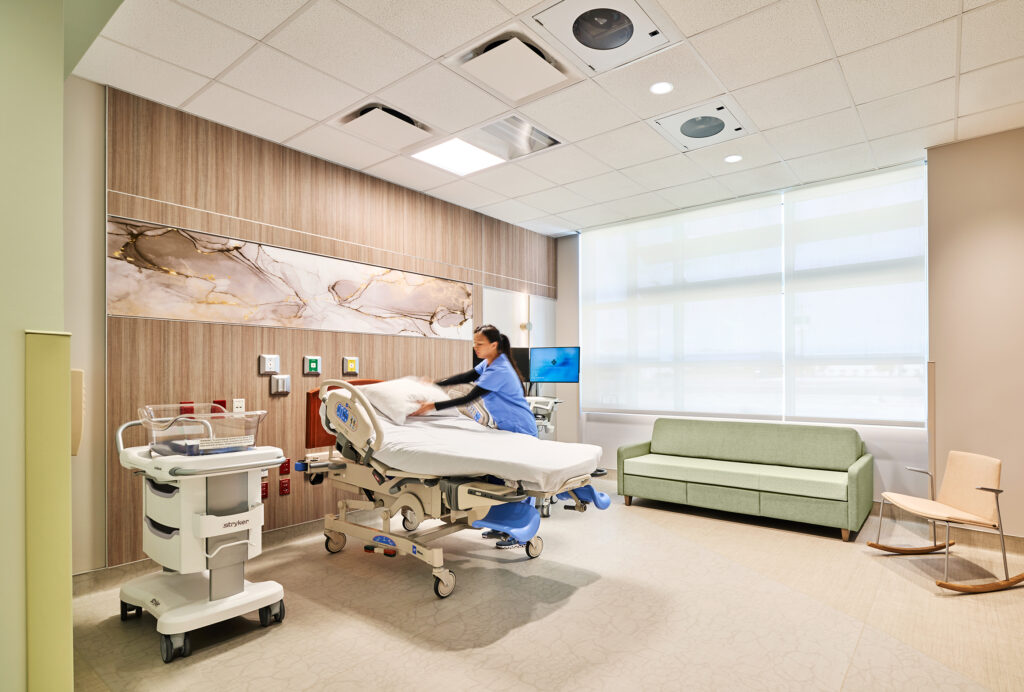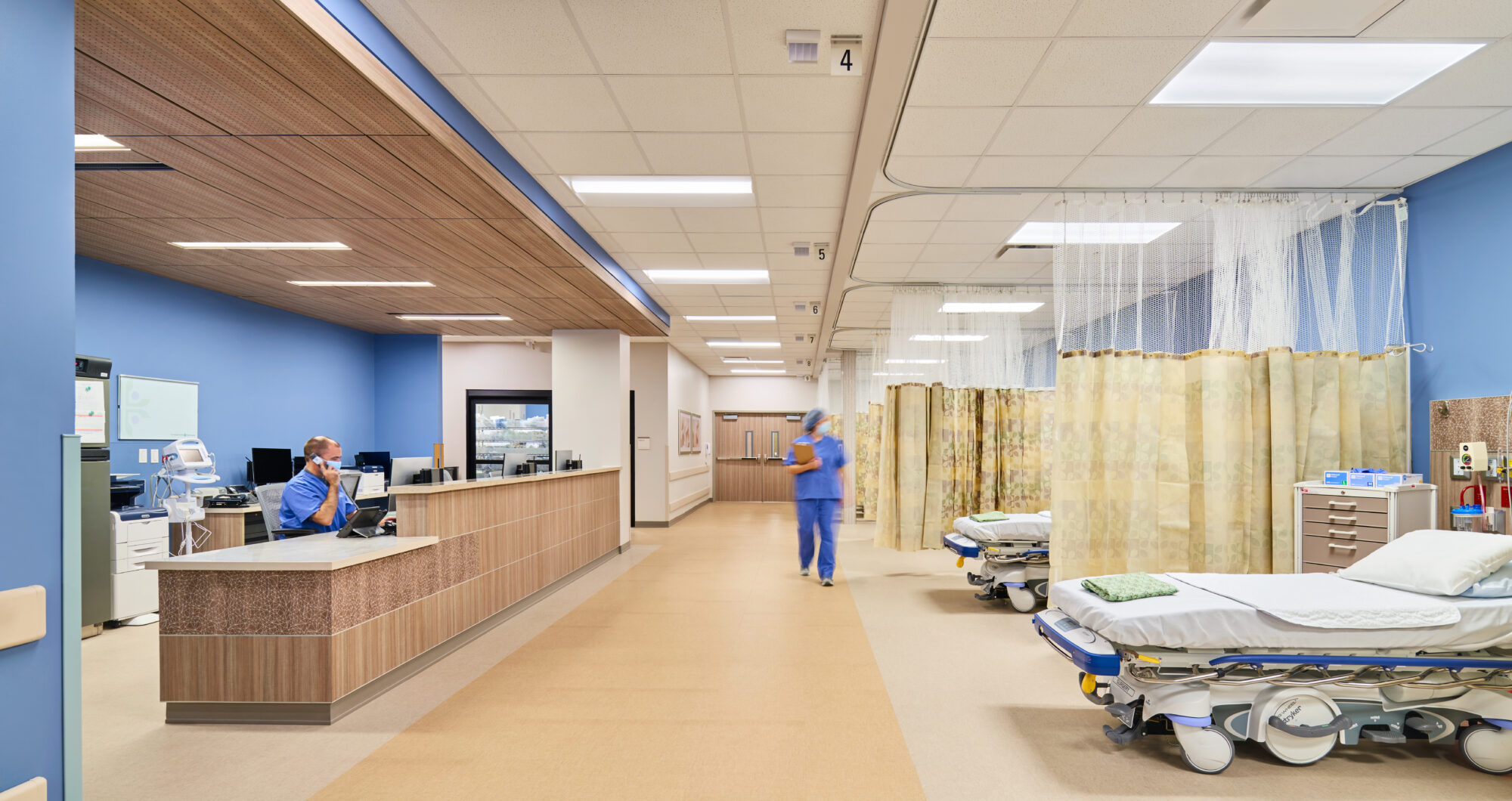Infection control within healthcare facilities is crucial for ensuring patient safety and minimizing the spread of airborne pathogens. Heating, Ventilation, and Air Conditioning (HVAC) systems play a vital role in maintaining indoor air quality and controlling infections. DBR is continually exploring technologies and strategies to improve the performance of HVAC systems for better infection control. We have developed a set of best practice HVAC design measures, with strategies supported by research and demonstrated outcomes, which can be implemented in specific situations to prevent the spread of viruses and harmful bacteria.

Retrofit of Existing HVAC Systems
Strategy #1: MERV 13 Filters and Bi-Polar Ionization
- Replace Filters with MERV 13 Filters
- Existing filters are typically MERV 11, MERV 8, or lower.
- Upgrading to MERV 13 filters increases the static pressure of the system, resulting in the need to adjust and rebalance the air handling unit fans.
- In some cases, replacing the AHU fan motor with a larger one may be required if the existing motor is at maximum capacity, potentially involving electrical changes.
- Add Bi-Polar Ionization or Cold Plasma System
- These systems help to remove or eliminate harmful organic and bacterial contaminants from the air.
- These systems may not be suitable for areas with immunocompromised individuals.
- Modifications to the existing AHU, including ductwork and piping, may be necessary.
- The installed cost of these technologies is approximately $1.00 per CFM (materials and labor).
Strategy #2: MERV 13 Filters and UV-C Light
- Replace Filters with MERV 13 Filters
- Similar to Strategy No. 1, upgrading to MERV 13 filters requires adjustments to the AHU fan system.
- Add UV-C Light
- UV-C light installed on the downstream side of the AHU cooling coil can effectively kill mold, bacteria, and other organic materials.
- Installation may require additional space within the AHU and modifications to ductwork and piping.
- The cost of UV-C light installation costs approximately $0.20 per CFM (materials and labor).
Strategy #3: Photocatalytic Oxidation (PCO)
- Add PCO system to air handling units
- A Titanium Dioxide catalyst is activated by UV lamps, removing contaminants from the airstream through oxidation.
- MERV 13 filters capture large and small particles, while UVGI energizes the photocatalyst to clean surfaces.
- Photocatalysis with titanium dioxide produces hydroxyl radicals that reduce biologics in the air stream. The contaminants are removed from the airstream rather than creating ions which are circulated in the occupied space to react with contaminants.
- The installed cost of these systems is approximately $2.00 per CFM (materials and labor).
- Add PCO systems to ductwork, plenums, or rooms.
- A variety of options are available with fans, filters, and casings to allow PCO systems to be installed in-line in a duct system or as a recirculating stand-alone unit.
Additional Measures for Existing Systems
- Increase Ventilation: Provide outdoor air and/or local exhaust airflow rates above the minimum prescribed requirements of ASHRAE Standard 62.1 and ASHRAE Standard 170. Increased ventilation removes or dilutes pollutants in the building’s air.
- Inspect and Clean Ductwork: Regular inspection and cleaning per ASHRAE and NADCA standards can minimize the recirculation of particulate matter.
- Operation & Maintenance: Regular cleaning of coils, inspection of dampers and pressure control devices, and filter maintenance can reduce airborne pathogen circulation.

New HVAC Systems
- The Strategies Outlined Above: All these strategies described for the retrofit of existing systems can be incorporated in the design of new HVAC systems to provide optimal indoor air quality and improved infection control.
- HEPA Filters: With 99.97% efficiency, HEPA filters can capture airborne viruses but increase AHU length, static pressure, and horsepower requirements. It is often difficult to add HEPA filters to existing air handling units, therefore this is generally included with new equipment. The estimated added cost for HEPA filters is $0.35 per CFM (material only).
- DBR’s Standard System for Patient Care Facilities: Utilizes MERV 8 & MERV 13 prefilters, MERV 14 postfilters, UVC lights at 35 watts/sf of cooling coil area, and bipolar ionizers in the air handling units. Additional considerations and more extensive strategies are used in specific applications.
Implementing these HVAC design measures can significantly enhance infection control in healthcare facilities. By adhering to established guidelines and incorporating advanced technologies, healthcare facilities can reduce the risk of airborne transmission of infectious diseases, ensuring a safer environment for patients and staff.
